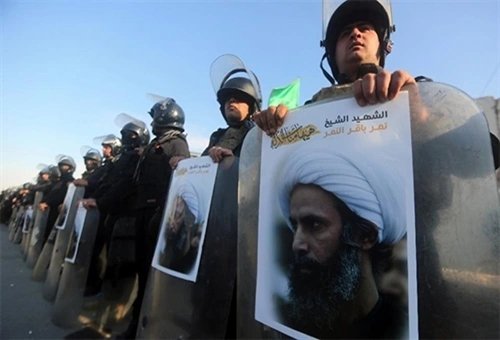
Saudi Arabia’s execution of pro-Iranian cleric Nimr Al-Nimr, leading to the severance of diplomatic relations between the two countries, is the culmination of a long-simmering conflict between two ambitious Middle Eastern powers.
The deep roots lie in the centuries-long schism between Sunni Muslims, the majority in Saudi Arabia, and Shi’ite Muslims, the majority in Iran.
This hatred and sectarian competition is the fundamental cause of disagreement in the Middle East and deepens conflicts in the region, of which the outbreak of conflict between Iran and Saudi Arabia is one.
Iraqi police hold a portrait of Shi’ite cleric Nimr Al-Nimr during a protest in Baghdad organized by Iraqi Shi’ite Muslims.
In addition, according to an analysis on the website America Today, there are 5 causes leading to new conflicts between Iran and Saudi Arabia today.
Saudi Arabia has benefited from the fact that the US and Iran have been at odds since the Iranian Islamic Revolution in 1979. However, this changed in 2015 when Iran and the P5+1 Group, which includes the US, reached
Accordingly, the US and other powers must remove economic sanctions against Iran in exchange for Iran’s compliance with the terms of the agreement.
The next factor is Yemen.
Syria is also another obstacle that prevents Saudi Arabia and Iran from having a common voice.
In addition to Syria, the `Iraq factor` also significantly dominates relations between two rival neighboring countries Iran and Saudi Arabia.
Currently, the Shi’ite-ruled Iraqi government is under strong influence from Iran.
The fifth factor is oil.
After economic sanctions are lifted, it is expected that Iran’s oil exports will increase, but in the context of current cheap oil prices, revenue from oil exports of Iran, a country with oil reserves, will increase.
According to analysts, Saudi Arabia, the world’s largest oil exporter, also suffered losses from the decline in oil prices.
According to Mai Nguyen
National Army






